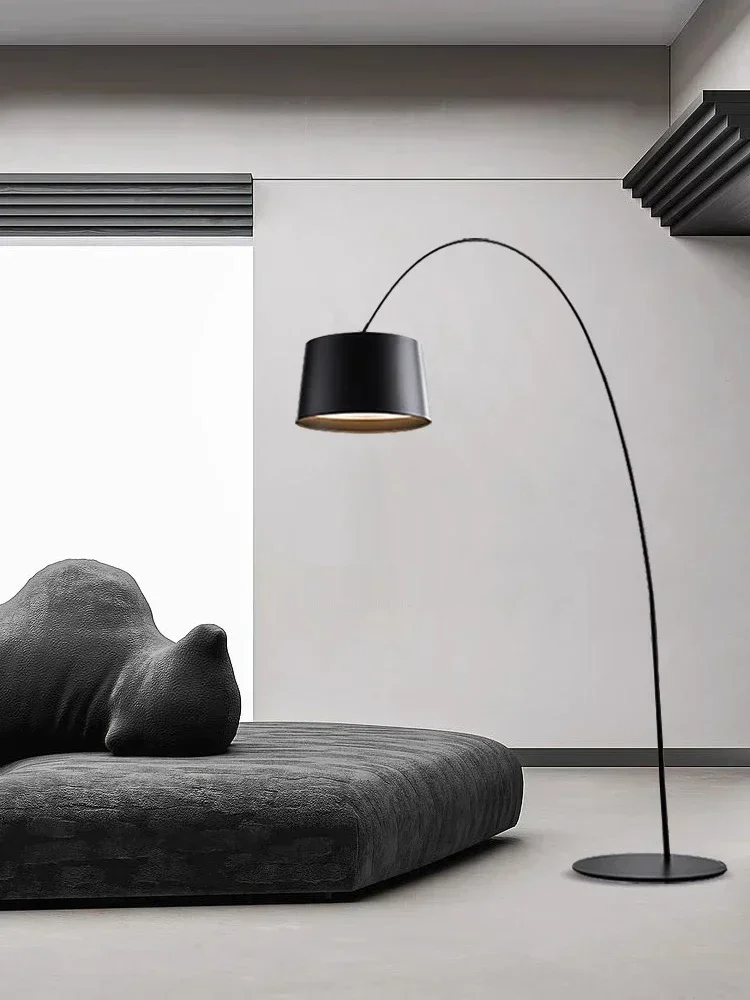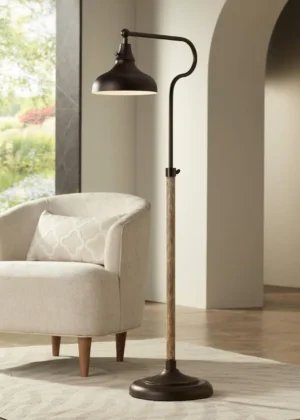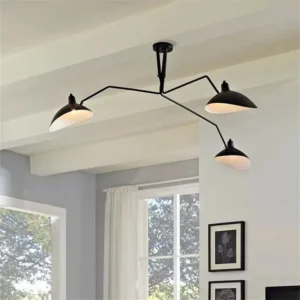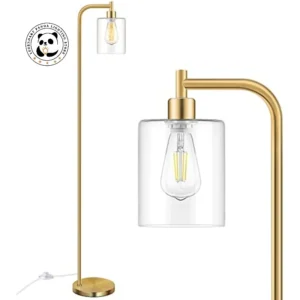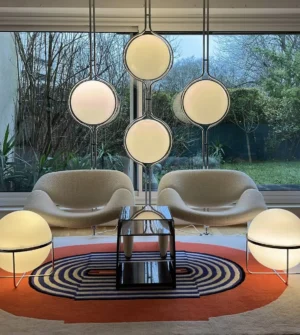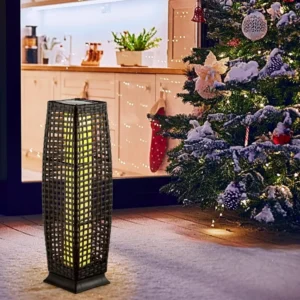Understanding the Power of Warm Lighting
Creating a cozy, inviting living room starts with one often-overlooked element: warm lighting. Unlike the harsh, clinical illumination found in offices and hospitals, warm lighting bathes your space in a golden glow that instantly transforms the atmosphere into something more intimate and comfortable.
Warm lighting is defined by its color temperature, measured in Kelvin (K). The lower the Kelvin number, the warmer the light appears. For truly cozy ambiance, you’ll want to aim for bulbs in the 2700K-3000K range, which produce a soft, amber light similar to what you’d see during sunset or from a gentle candle flame.
The benefits of warm lighting extend far beyond mere aesthetics:
- It promotes relaxation and reduces stress by mimicking natural evening light
- Creates a more intimate atmosphere for conversations and gatherings
- Enhances the appearance of skin tones, making everyone look healthier
- Accentuates the richness of wood furniture, textiles, and warm-colored décor
The contrast between warm and cool lighting is striking. While cool lighting (4000K and above) creates an alert, energetic environment ideal for workspaces, warm lighting signals to our bodies that it’s time to unwind. This distinction is rooted in our natural circadian rhythms, where warmer evening light prepares us for rest.
When designing your living space, understanding warm lighting characteristics becomes essential for creating the desired mood. The right lighting temperature can dramatically alter how colors appear in your room and how comfortable the space feels, making it a critical consideration when choosing the perfect arc floor lamp or any other lighting fixture.
The Essential Elements of Layered Lighting Design
Creating truly inviting warm lighting isn’t as simple as swapping out a few bulbs—it requires thoughtful layering. Layered lighting brings dimension and depth to your living room, eliminating flat, one-dimensional illumination that fails to showcase your space properly.
Ambient Lighting: Your Foundation
Ambient lighting provides overall illumination and serves as the base layer of your lighting design. Think of it as the light that allows you to navigate your room safely. Sources typically include:
- Ceiling fixtures (flush mounts, semi-flush mounts)
- Recessed lighting arranged in a pattern
- Indirect lighting that bounces off ceilings or walls
- Large floor lamps with upward-facing light
The key to warm ambient lighting is ensuring even distribution without harsh brightness or shadows.
Task Lighting: Functional Illumination
Task lighting serves a specific purpose—providing focused light for activities like reading, hobbies, or conversations. This second layer includes:
- Reading lamps positioned beside seating
- Table lamps on side tables or consoles
- Directional floor lamps that can be adjusted
- Under-cabinet lighting (for living rooms with storage or shelving)
Task lighting should be bright enough for its purpose but maintain the warm color temperature consistent with your ambient lighting.
Accent Lighting: The Magic Touch
Accent lighting adds drama, highlights architectural features, and creates visual interest. This third layer includes:
- Wall sconces that cast gentle light up or down walls
- Picture lights illuminating artwork
- LED strips behind furniture or shelving
- Spotlights focused on decorative objects or plants
Multi-light arc floor lamps are particularly effective at creating this layered effect, as they can provide both ambient illumination and directed accent lighting from a single fixture.
The magic of layered lighting comes from the interplay between these three elements. When properly executed, layered lighting eliminates harsh shadows and creates a warm, inviting atmosphere with visual depth and interest. Rather than relying on a single overhead light that flattens your space, layering allows you to sculpt light and shadow, highlighting your room’s best features while creating pockets of warmth and coziness.
Selecting the Right Light Bulbs for Warm Ambiance
The bulbs you choose play a critical role in achieving warm lighting. Even the most beautifully designed lamp can’t create cozy ambiance if fitted with the wrong bulb. Here’s how different bulb types contribute to warm lighting:
Types of Bulbs for Warm Lighting
| Bulb Type | Warmth Characteristics | Energy Efficiency | Lifespan | Best For |
|---|---|---|---|---|
| LED (2700K-3000K) | Excellent warmth with proper selection | Very High | 15,000-25,000 hours | Everyday use, long-term efficiency |
| Incandescent | Natural, inherent warmth | Low | 1,000-2,000 hours | Spaces where lights are used infrequently |
| Halogen | Crisp, bright warmth | Moderate | 2,000-4,000 hours | Task lighting requiring brightness |
| Smart/Tunable | Adjustable from warm to cool | High | 15,000+ hours | Multi-purpose rooms with changing needs |
When selecting bulbs, remember that Kelvin (color temperature) and lumens (brightness) are different measurements. A common mistake is confusing brightness with warmth—you can have bright light that’s still warm in color temperature. For living rooms, aim for:
- Ambient lighting: 2700K-3000K at approximately 10-20 lumens per square foot
- Task lighting: 2700K-3000K at 30-50 lumens per square foot
- Accent lighting: 2700K-3000K at approximately 30 lumens per square foot
Another important but often overlooked specification is CRI (Color Rendering Index). This measures how accurately a light source reveals the true colors of objects compared to natural light. For warm, flattering living room lighting, select bulbs with a CRI of 90 or above, which will make your furnishings, artwork, and even skin tones look richer and more natural.
LED arc floor lamps offer an excellent combination of energy efficiency and warm lighting capability. Modern LEDs have overcome the “cold LED look” of earlier generations and now produce beautiful warm light while consuming significantly less energy than traditional bulbs.
Warm Lighting Fixtures: Options for Every Living Room Style
With an understanding of bulb types and color temperature, let’s explore the fixtures that can best showcase warm lighting in your living room.
Floor Lamps: Versatile Statement Pieces
Floor lamps add both style and function, creating warm pools of light at different heights:
- Arc floor lamps extend light over seating areas without requiring ceiling installation
- Torchiere lamps direct light upward for gentle ambient illumination
- Club-style floor lamps with fabric shades diffuse light for a soft glow
- Multi-directional floor lamps allow you to adjust light to specific areas
Wooden arc floor lamps are particularly effective for warm lighting, as the natural material complements the warm light and adds organic texture to your space.

Table Lamps: Intimate Lighting Zones
Table lamps create intimate lighting zones and add decorative elements:
- Drum shades diffuse light evenly in all directions
- Empire shades direct more light downward for reading
- Glass or ceramic bases can be illuminated for additional glow
- Consider the shade material—linen and fabric shades produce softer light than metal
Wall Sconces: Space-Saving Warmth
Wall sconces add warm light without occupying table or floor space:
- Upward-facing sconces create gentle ambient lighting
- Downward-facing sconces provide more focused illumination
- Double-direction sconces create interesting wall patterns
- Consider placement at eye level for seating areas or slightly higher for general illumination
Pendant Lights and Chandeliers: Dramatic Focal Points
In living rooms with higher ceilings:
- Cluster pendants at different heights for visual interest
- Semi-transparent shades create a warm glow while reducing glare
- Chandeliers with dimmable bulbs offer flexibility for different moods
- Position these fixtures 7-8 feet above the floor in seating areas
Recessed Lighting: Subtle Background Warmth
For a modern look:
- Use warm-toned trim to enhance the warmth of the light
- Position recessed lights 2-3 feet from walls to create a gentle wash effect
- Consider adding a dimming system for maximum flexibility
- Opt for adjustable recessed fixtures to highlight artwork or architectural features
Track Lighting: Directional Warmth
For highlighting specific areas:
- Use track lighting with adjustable heads to illuminate artwork or shelving
- Select warm-finish tracks that complement your décor
- Consider low-voltage systems for a softer effect
- Position tracks away from seating areas to avoid direct glare
When selecting fixtures, consider not just the light they produce but how the fixture itself looks both when lit and unlit. The best fixtures serve as decorative elements even when turned off, complementing your living room’s style whether traditional, modern, industrial, or eclectic.
Strategic Placement: Mapping Your Living Room Lighting Plan
Creating a comprehensive lighting plan requires thinking about your living room as a collection of activity zones rather than a single space. Begin by mapping out how you use different areas of the room:
Identify Your Living Room Zones
- Primary seating area (sofa and main seating)
- Secondary seating (individual chairs, window seats)
- Reading corners
- TV/entertainment area
- Conversation spaces
- Transition areas (entryways to other rooms)
For each zone, consider what activities take place there and what type of lighting would best support those activities. Best lighting for living rooms typically combines ambient, task, and accent lighting tailored to each zone’s function.
Optimal Placement Guidelines
- Position floor lamps slightly behind and to the side of seating (not directly overhead)
- Mount wall sconces approximately 60-66 inches from the floor
- Place table lamps so the bottom of the shade sits at approximately eye level when seated
- Space ambient light sources evenly to eliminate dark zones
- Position task lighting to illuminate without creating glare on screens
Addressing Common Challenges
High Ceilings:
– Use pendant lights or chandeliers that descend to a more intimate height
– Add wall sconces at mid-height to bring light down to living level
– Consider uplighting from tall floor lamps to fill the vertical space
Dark Corners:
– Place corner floor lamps with multi-directional heads
– Use wall-washing techniques with sconces or track lighting
– Consider rope lighting along ceiling edges for subtle illumination
Open Concept Spaces:
– Use lighting to define different functional areas
– Create visual boundaries with pendant lighting over specific zones
– Maintain consistent color temperature throughout for cohesion
Remember that the distance between light sources is just as important as their individual placement. As a general rule, aim to have some form of lighting every 4-6 feet to create an even, warm glow throughout the room.
Enhancing Warmth Through Light Manipulation Techniques
Beyond selecting the right fixtures and bulbs, several techniques can enhance the perceived warmth of your living room lighting:
The Power of Dimming
Dimming capabilities dramatically increase the flexibility of your lighting scheme:
- Install dimmer switches for overhead lighting fixtures
- Select floor and table lamps with built-in dimming functions
- Create preset dimming “scenes” with smart lighting systems
- Remember that incandescent and halogen bulbs become warmer in tone as they dim, while LEDs maintain their color temperature
Dimmable arc floor lamps offer particular versatility, allowing you to adjust light levels based on the time of day or activity.
Lampshade Selection
The material, color, and shape of lampshades significantly affect light quality:
- Linen shades diffuse light evenly with a natural warmth
- Paper shades create a soft, gentle glow ideal for ambient lighting
- Opaque shades direct light up and down, creating dramatic effects
- Warm-colored shades (cream, gold, blush) tint the light passing through them
Directional Lighting for Warmth Zones
Create pools of warm light by directing fixtures strategically:
- Angle adjustable lights toward walls to create a reflected glow
- Focus directional lights on warm-toned objects or surfaces
- Create overlapping light zones for a layered effect
- Use narrow-beam bulbs to create concentrated pools of light
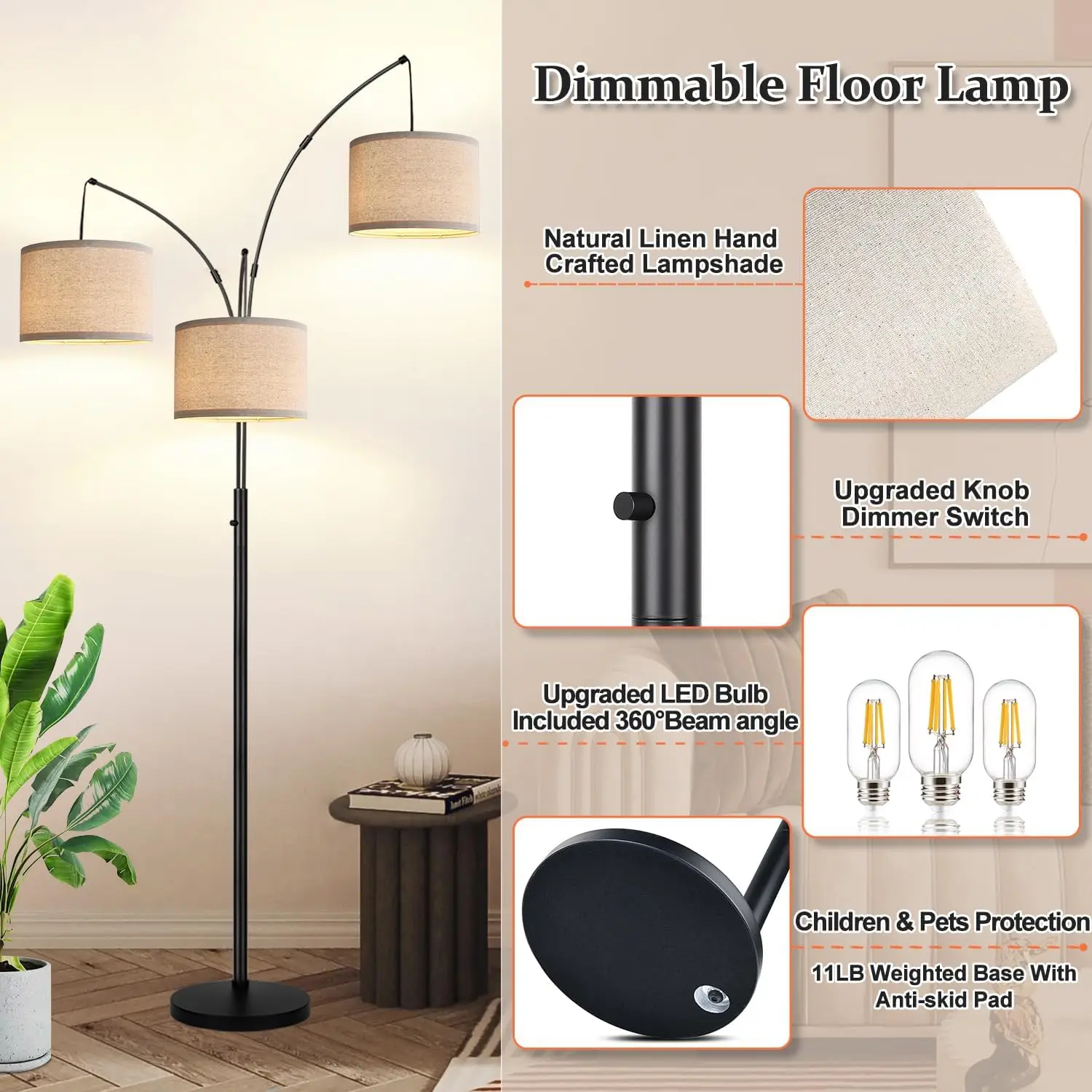
Environmental Factors
The surfaces in your room interact with light to enhance or diminish warmth:
- Warm-colored walls (cream, beige, terracotta) reflect and enhance warm lighting
- Mirrors strategically placed can amplify warm light sources
- Glossy surfaces create reflection points that distribute light
- Textured surfaces create subtle shadow play that adds depth to warm lighting
By manipulating these elements, you can significantly enhance the cozy factor of your living room without necessarily adding more fixtures or increasing energy consumption.
Warm Lighting for Different Living Room Activities
Different activities require specific lighting approaches to create the ideal warm atmosphere:
| Activity | Ambient Light Level | Task Light Needs | Accent Light Focus | Ideal Fixtures |
|---|---|---|---|---|
| Relaxing/TV Watching | Low (30-40% brightness) | Minimal or none | Gentle background highlights | Dimmable floor lamps, wall sconces |
| Reading | Moderate ambient with bright task | Focused, adjustable light | Minimal to avoid distraction | Adjustable reading lamps, table lamps |
| Entertaining | Medium-bright (60-80%) | Optional for food/drink areas | Enhanced to showcase décor | Chandelier/pendant with wall sconces |
| Working/Studying | Medium with focused task lighting | Bright, directional light | Minimal to avoid distraction | Desk lamps, directional floor lamps |
Creating a perfectly lit reading corner requires special attention to task lighting positioned to eliminate shadows on your reading material while maintaining overall room comfort.
Transitioning Between Lighting States
For living rooms that serve multiple functions, consider how to easily transition between lighting scenes:
- Group lights on separate switches based on function
- Install preset scene controllers for one-touch adjustment
- Use smart lighting that can be controlled via phone or voice
- Consider motion sensors for low-level pathway lighting at night
Zoning Multi-Use Living Rooms
For open or multi-purpose living rooms, use lighting to create distinct zones:
- Define conversation areas with pendant lights or floor lamps
- Highlight the TV area with subtle bias lighting
- Create a reading nook with dedicated task lighting
- Use different brightness levels to visually separate spaces
By tailoring your lighting approach to specific activities, you create a more functional and comfortable living environment that adapts to your changing needs throughout the day.
Budget-Friendly Warm Lighting Solutions
Creating warm, inviting lighting doesn’t have to break the bank. Here are cost-effective approaches to enhance your living room’s ambiance:
Start with Bulbs
The most affordable place to begin is by upgrading your existing bulbs:
- Replace cool white bulbs with warm white LEDs (2700K-3000K)
- Add dimmable bulbs to existing fixtures for instant flexibility
- Install smart bulbs in your most-used fixtures for adaptable lighting
- Use higher-quality bulbs in key positions (like reading areas) where light quality matters most
Maximize Existing Fixtures
Before purchasing new fixtures, enhance what you already have:
- Add diffusers to harsh direct lights
- Replace dated or damaged lampshades with warm-toned options
- Reposition existing lamps to create better light layering
- Clean fixtures and bulbs—dust can reduce light output by up to 30%
Affordable Accent Lighting
Add warmth with inexpensive accent options:
- String lights draped along bookshelves or window frames
- Flameless LED candles grouped on coffee tables or mantels
- Plug-in wall sconces that don’t require electrical work
- LED strip lights behind furniture or under shelving
Strategic Prioritization
If working with a limited budget, prioritize in this order:
- Update bulbs to warm temperature in existing fixtures
- Add or upgrade task lighting in frequently used areas
- Incorporate simple accent lighting for dimension
- Gradually replace or add key fixtures as budget allows
The complete arc floor lamp guide includes options at various price points, showing that even statement pieces can be found at accessible prices.
Balancing Modern Technology with Timeless Warm Ambiance
Modern lighting technology offers unprecedented control and efficiency, but maintaining that cozy, timeless warm ambiance requires thoughtful implementation:
Smart Lighting That Feels Natural
Smart lighting systems offer convenience without sacrificing warmth:
- Program color temperature shifts that follow natural daylight patterns
- Create preset scenes for different activities that maintain warm tones
- Use motion sensors for practical lighting that activates only when needed
- Consider voice-controlled systems that allow adjustments without disrupting activities
LED Integration Without the “Cold Look”
Modern LEDs have overcome their earlier limitations:
- Select high-quality LEDs with CRI ratings above 90
- Look for “warm dim” LED technology that mimics incandescent dimming behavior
- Use LED strips with diffusers to eliminate visible diodes
- Combine LEDs with traditional fixtures for a harmonious blend
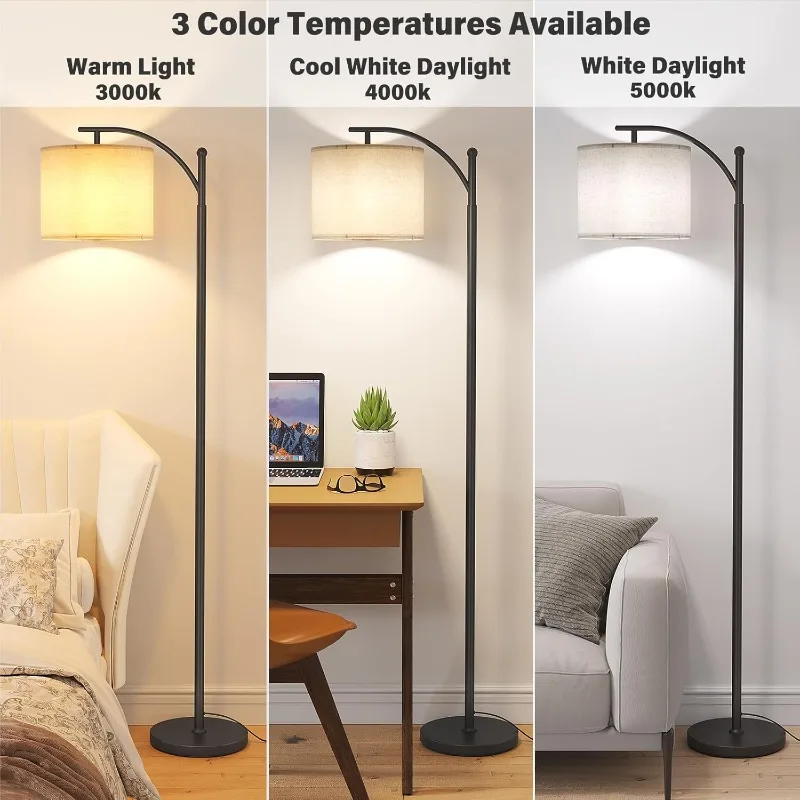
Adjustable Arc Floor Lamp, Bronze Arc Floor Lamp
Price range: $440.95 through $558.52 Select options This product has multiple variants. The options may be chosen on the product page- Price range: $174.28 through $658.31 Select options This product has multiple variants. The options may be chosen on the product page
Brass Arc Floor Lamp, Contemporary Arc Floor Lamp, LED Arc Floor Lamp
Price range: $490.72 through $522.04 Select options This product has multiple variants. The options may be chosen on the product pageChrome Arc Floor Lamp, LED Arc Floor Lamp
Price range: $304.95 through $1,210.40 Select options This product has multiple variants. The options may be chosen on the product pageMid-Century Arc Floor Lamp, Wood Arc Floor Lamp
$230.86 Select options This product has multiple variants. The options may be chosen on the product pageLED Arc Floor Lamp, Rattan Arc Floor Lamp
$313.58 Select options This product has multiple variants. The options may be chosen on the product page
Adjustable arc floor lamps represent the perfect marriage of modern technology and timeless design, offering precise control over light placement while maintaining a classic silhouette.
Energy Efficiency Without Compromise
Create warm lighting that’s also environmentally conscious:
- Use timers and occupancy sensors to reduce energy waste
- Select fixtures with built-in LED modules for maximum efficiency
- Focus higher wattage only where truly needed, using lower wattage for ambient light
- Consider daylight harvesting techniques that adjust artificial light based on available natural light
By thoughtfully integrating modern technology, you can enjoy the benefits of contemporary lighting advances while preserving—and even enhancing—the warm, inviting atmosphere that makes a living room truly comfortable.
Common Warm Lighting Mistakes to Avoid
Even with the best intentions, certain lighting mistakes can undermine your efforts to create a warm, inviting living room. Here are the most common pitfalls and how to avoid them:
Relying on Overhead Lighting Alone
Ceiling fixtures casting light directly downward create harsh shadows and unflattering illumination.
Solution: Layer lighting with multiple sources at different heights, particularly adding mid-level lighting from table lamps and floor lamps.
Mixing Incompatible Color Temperatures
Using bulbs with different Kelvin ratings creates a disjointed feeling and can make warmer lights appear orange or yellow.
Solution: Maintain consistency with all bulbs in the 2700K-3000K range, or use smart bulbs programmed to the same temperature.
Neglecting Dimming Capabilities
Fixed-brightness lighting lacks flexibility for different moods and activities.
Solution: Install dimmers on hardwired fixtures and select lamps with built-in dimming functionality.
Incorrect Fixture Sizing
Lights that are too small for the space appear anemic, while oversized fixtures can overwhelm a room.
Solution: Follow the rule that a central fixture’s diameter in inches should roughly equal the sum of the room’s length and width in feet.
Poor Placement Causing Glare
Lights positioned at eye level or without proper shading cause discomfort.
Solution: Use diffusers, proper shades, and strategic placement to ensure light sources never shine directly into eyes when seated.
Overlooking Shadow Creation
Improperly placed lights create unflattering shadows, especially for reading or conversation areas.
Solution: Test lighting at night before finalizing placement, and ensure task areas have light from multiple angles to eliminate shadows.
Insufficient Lighting Controls
Basic on/off switches limit your ability to create different lighting scenes.
Solution: Install multi-way switches, dimmers, or smart controls that allow zone-specific adjustments.
Knowing what to look for in an arc floor lamp helps avoid these common mistakes when selecting statement lighting pieces for your living room.
Is Warm Lighting Suitable for All Living Room Styles?
While warm lighting enhances most living rooms, different interior design styles require specific approaches to maintain stylistic integrity while creating a cozy atmosphere:
Modern/Minimalist Spaces
Can warm lighting work? Absolutely, though with careful implementation.
Modern spaces often feature clean lines and cool-toned materials like glass, chrome, and concrete. Warm lighting softens these hard elements, creating necessary balance:
- Use architectural fixtures with warm LEDs
- Incorporate indirect lighting that washes walls with warmth
- Select fixtures with simple, clean designs but warm light output
- Maintain a minimalist look with recessed lighting and hidden LED strips
Traditional/Classic Interiors
Can warm lighting work? This is where warm lighting truly shines.
Traditional spaces naturally embrace warm lighting through:
- Chandeliers with fabric shades or candle-style bulbs
- Table lamps with classic bases and warm-toned fabric shades
- Wall sconces that mimic historical lighting
- Natural wood arc lighting that complements traditional materials
Industrial Style
Can warm lighting work? Yes, providing essential contrast.
Industrial spaces feature raw materials and utilitarian elements. Warm lighting adds much-needed comfort:
- Edison-style bulbs with visible filaments
- Metal fixtures with warm-toned finishes like brass or copper
- Factory-inspired fixtures reimagined with warm light sources
- Contrast cool concrete and metal with pools of warm light
Scandinavian Design
Can warm lighting work? Definitely, as a counterpoint to white spaces.
Scandinavian interiors emphasize light colors and natural materials. Warm lighting enhances these spaces by:
- Creating hygge (coziness) through multiple light sources
- Using paper lanterns and natural material shades
- Incorporating candles and fire-inspired lighting
- Balancing white walls with warm-toned illumination
Each style benefits from warm lighting, though the specific approach and fixture selection should complement the overall design aesthetic.
Can You Have Too Much Warm Lighting?
While warm lighting creates inviting spaces, it’s possible to overdo it. Balance is key to avoiding rooms that feel artificially orange or visually heavy.
Signs Your Lighting Might Be Too Warm
- Colors appear distorted or overly yellow
- The space feels artificially “themed” rather than naturally cozy
- White elements in your décor look dingy or aged
- The room feels dark despite adequate lighting fixtures
Finding the Right Balance
To achieve optimal warmth without going overboard:
- Consider slightly higher Kelvin ratings (3000K rather than 2700K) for ambient lighting
- Balance warm fixtures with some neutral light sources, particularly near windows
- Use slightly cooler temperature lighting for task areas where color accuracy matters
- Adjust lighting seasonally—warmer in winter, slightly less warm in summer
Balancing with Natural Light
Natural daylight (5000-6500K) is quite cool compared to warm artificial lighting. To harmonize them:
- Use adjustable window treatments to soften harsh daylight
- Position warm light sources away from windows to avoid direct contrast
- Consider smart lighting that adjusts color temperature throughout the day to complement natural light
- Use slightly warmer bulbs in north-facing rooms and slightly cooler ones in south-facing spaces
When properly balanced, warm lighting creates a living room that feels naturally inviting rather than artificially styled—a subtle difference that significantly impacts how comfortable and authentic your space feels.

